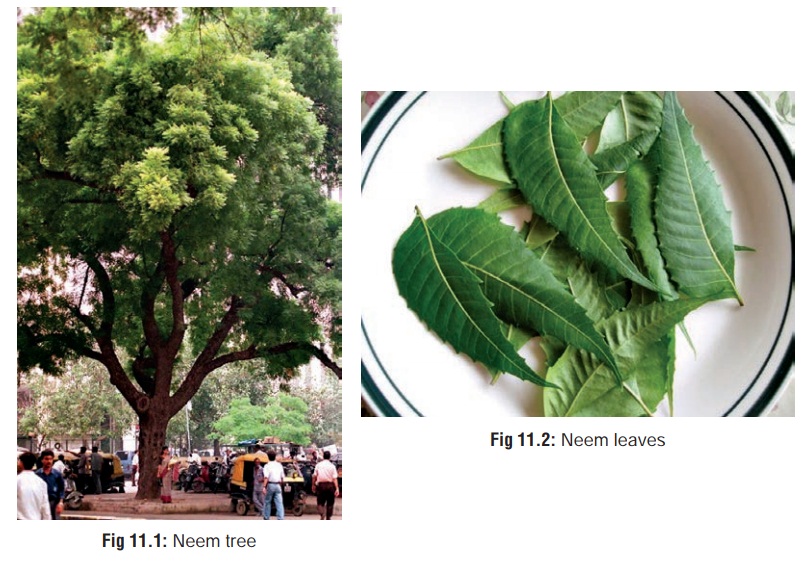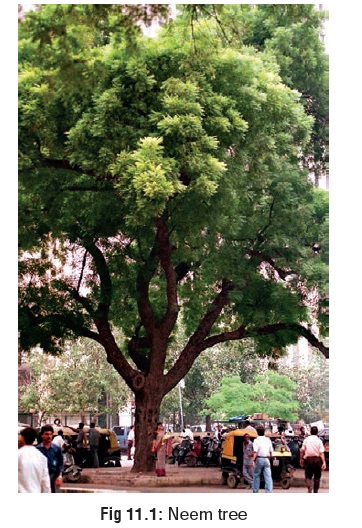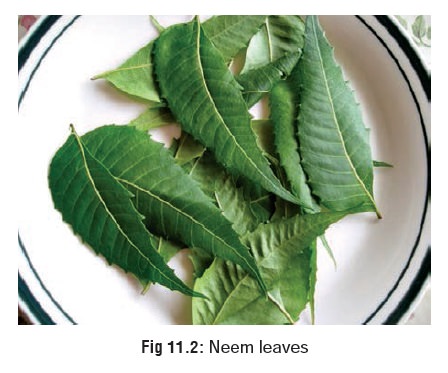Chapter: Modern Medical Toxicology: Organic Poisons (Toxins): Plants of Special Importance
Neem - Hepatotoxic Plants

Hepatotoxic Plants
Neem
Other Common Names
Margosa
tree.
Botanical Name
Azadirachta indica.
Physical Appearance
This
tree belonging to family Meliaceae grows well in most parts of the country (Fig 11.1) and is revered highly for its
medicinal properties. The seeds yield a yellowish oil (neem oil or margosa oil)
which has a disagreeable odour and bitter taste.

Uses
Various parts of the tree as well as the oil have been used in the treatment of a wide variety of ailments.
Rural
folk often chew on the twig of this tree to “clean” their teeth as an alternative
to brushing with conventional dentifrices.
Toxic Part
Leaves
(Fig 11.2) and seeds.

Toxic Principles
·
Margosa oil and leaf extract contain
stearic, oleic, palmitic, and linoleic acids.
·
Aflatoxins may be present in
unrefined oil.
Clinical Features
Ingestion
of leaf extract or excess of margosa oil results in hepatotoxicity with
vomiting, drowsiness, and encephalopathy. Metabolic acidosis is often present.
Convulsions, myocarditis (with ventricular fibrillation), and pancreatitis have
been reported.
Treatment
■■Control of convulsions.
■■Correction of acidosis.
■■Management of cerebral oedema.
■■ Supportive
measures.
Related Topics